Kozuka: The Japanese Knife Handle Explained
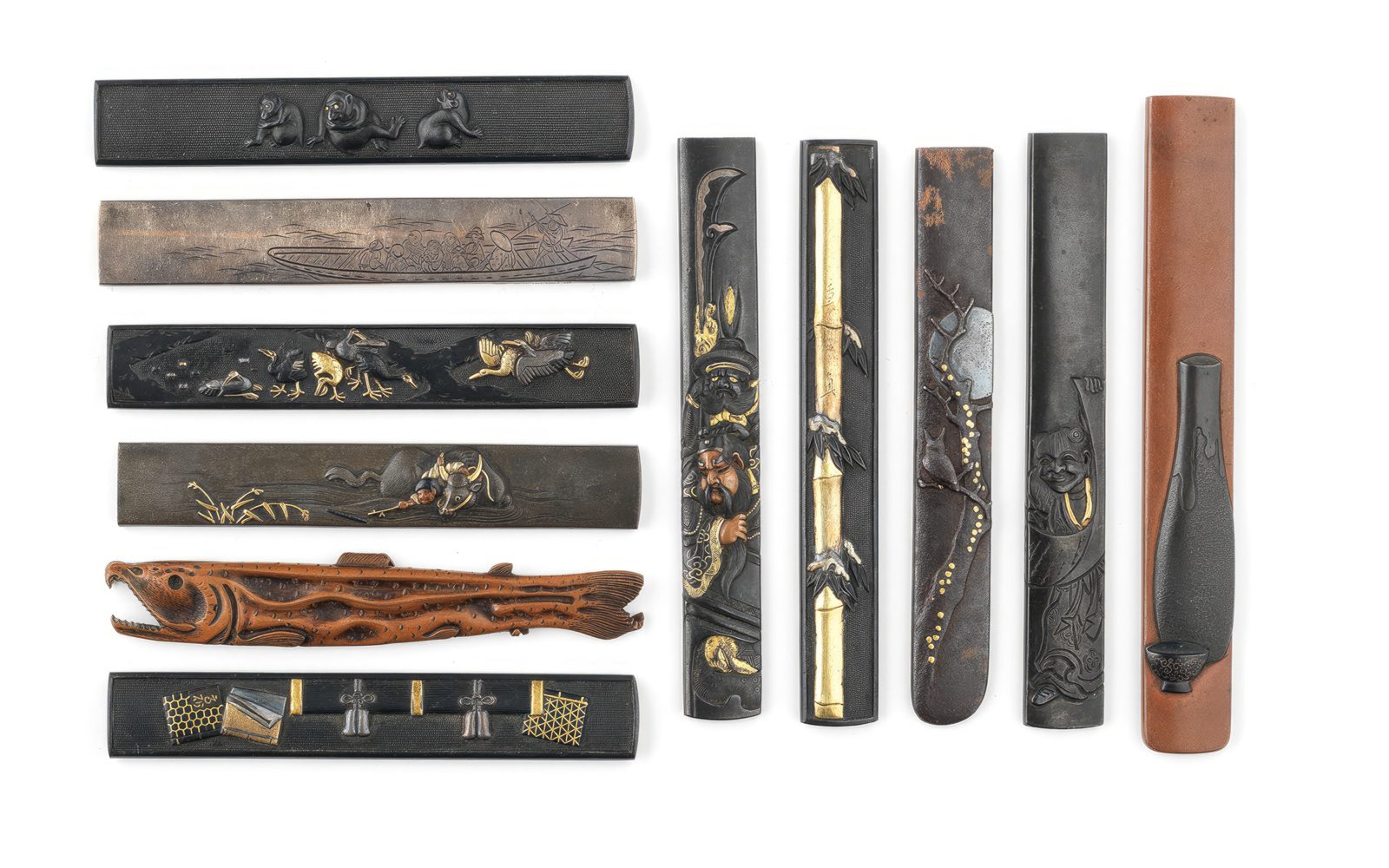
The kozuka serves as the handle of a small utility knife carried within the scabbard of Japanese daggers and swords. This decorative part of a sword mounting is often elaborately decorated, revealing the status, wealth, and style of its owner. It is no surprise that it has become a sought-after collectible item in its own right.
KEY TAKEAWAYS:
- The kozuka specifically refers to the handle of a small Japanese knife called kogatana, but among collectors, the whole knife is often referred to as kozuka.
- The kozuka was often designed to match the kogai (hairdressing tool). It was made to fit into the sides of Japanese sword scabbards, such as those of the katana, wakizashi, and tanto.
- A kozuka was often elaborate and of fine craftsmanship, decorated with carvings, inlays, and colored metals. Those made from copper-gold-alloy (shakudo) with golden elements were popular among samurai and often worn on formal occasions.
Anatomy: Parts of a Kozuka
The term kozuka (小柄) means small hilt, referring specifically to the hilt of the knife while its blade is called kogatana. Among collectors, the term kozuka is sometimes used to describe the entire knife, which is kept in a slot on the reverse side of a scabbard. It often has a matching kogai (hairdressing tool) on the opposite side.
Here are the different parts of a kozuka:

- Tojiri (戸尻) – The butt end of a kozuka.
- Do (胴) – The term do literally means torso or trunk. It refers to the grip section of a kozuka.
- Ji-Ita (地板) – A ground plate set on the grip of a kozuka. Occasionally, the ji-ita was taken from a kogai (hairdressing tool) and set in a kozuka.
- Mon (紋) – The motif area set on the ground plate, sometimes a heraldic insignia.
- Koberi (小縁) – The term koberi translates to “small rim”. It refers to optical borders framing the motif area. Some kozuka, known as bo-kozuka, don’t have these koberi rim borders. In such cases, the motifs reach the actual edge of the ground plate or sometimes extend beyond the back side of a kozuka.
- Munekata or Munakata (棟方) – Meaning “towards the back”, it refers to the side of the grip on the mune (back) side of the blade when sheathed.
- Hakata (刃方) – The hakata or cutting edge refers to the side of the kozuka on the cutting edge of the blade when sheathed.
- Koguchi or Toguchi (小口・戸口) – Translating to “small opening”, this term refers to the opening on a kozuka into which the blade (kogatana) is inserted, opposite the tojiri.
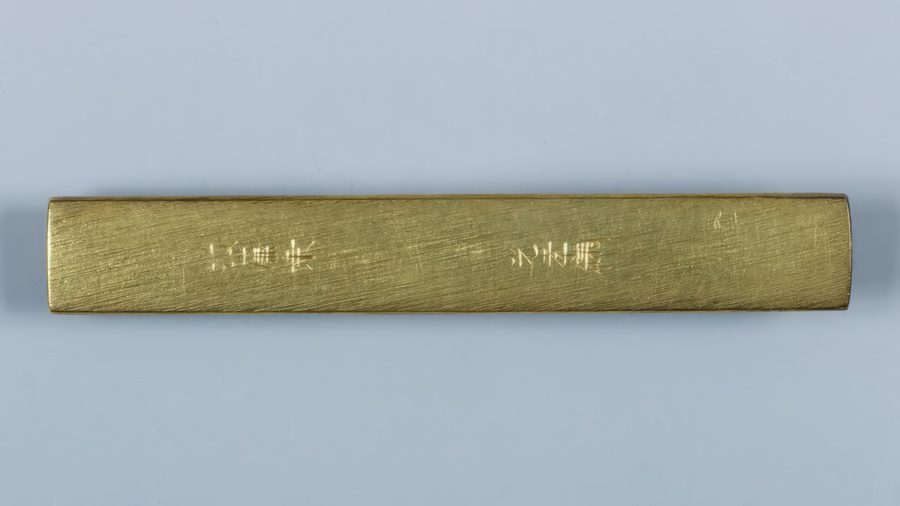
- Ura-Ita (裏板) – The back plate of a kozuka. It is often decorated with file marks (yasurime), monogram (kao), and signed by the maker.

The sword guard (tsuba) has a semicircular opening (kozuka-hitsuana or kozuka-hitsu) on the left to accommodate the end of the kozuka, allowing it to be drawn from the scabbard. On the other hand, the kozuka slot piece on the scabbard (saya) is called ura-gawara.
Craftsmanship and Design of a Kozuka
Artisans used various types of materials and traditional Japanese metalworking techniques when crafting a kozuka. More often, a kozuka was designed to match the kogai (hairdressing tool), which was carried on the opposite side of the scabbard.
Now, let’s delve into the fine craftsmanship and design of a kozuka:
Material and Construction
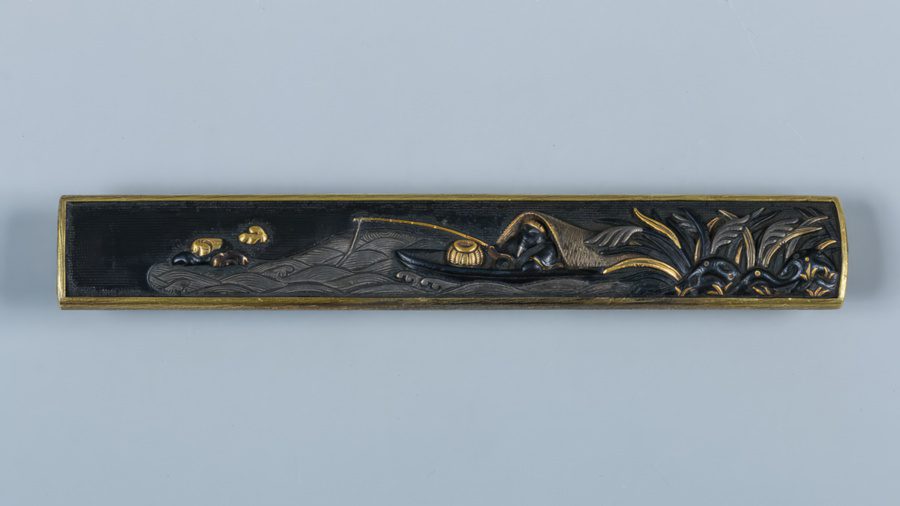

The kozuka was often made of metal, though horn and wood were occasionally used. Typical ground materials used include copper, brass (shinchu), iron, silver, and gold. Some were made of shakudo, a copper-gold alloy artificially patinated to a dark blue-black color.
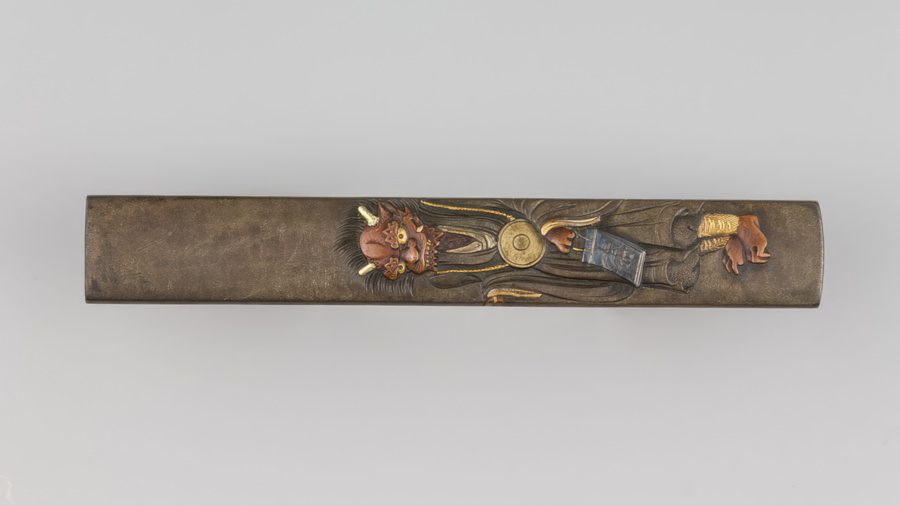
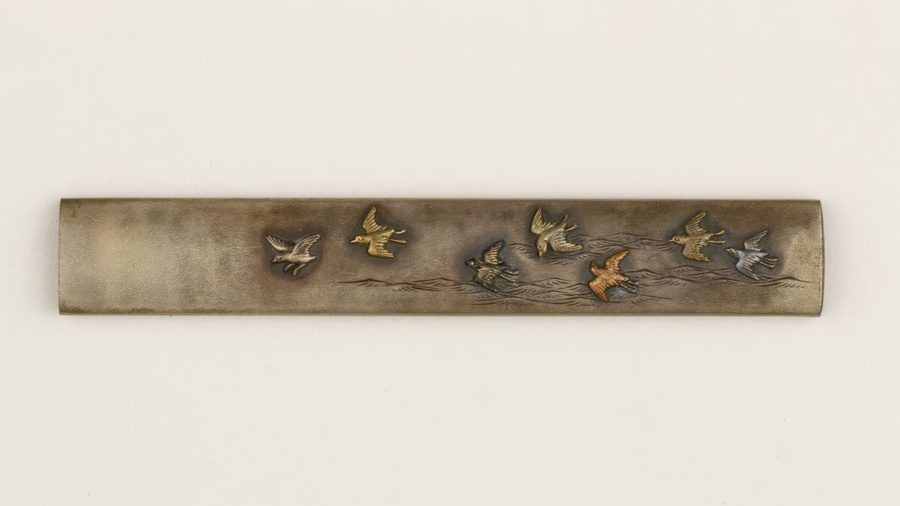
Others were made of shibuichi, a copper-silver alloy patinated in a range of subtle colors, from brown or blue to greenish gray. These materials gained widespread popularity not only for the kozuka, but for sword mounts in general.
Size and Function
The kozuka, approximately 3.74 inches (9.5 centimeters) in length, is fitted around the knife tang like a sleeve. When affixed with a blade (kogatana), its total length extends to around 7.87 inches (20 centimeters). The kozuka mainly served as a sword accessory, carried in the scabbards of wakizashi and tanto and occasionally mounted to a katana.
The utility knife (kogatana) served as an all-purpose tool and used for whatever the sword or dagger was too big or too precious for. Although often mistaken for a shuriken or throwing knife, its balance and construction are not ideal for such purposes. While it has the potential for self-defense when no other option was available, the blade itself was relatively weak.
Design and Craftsmanship
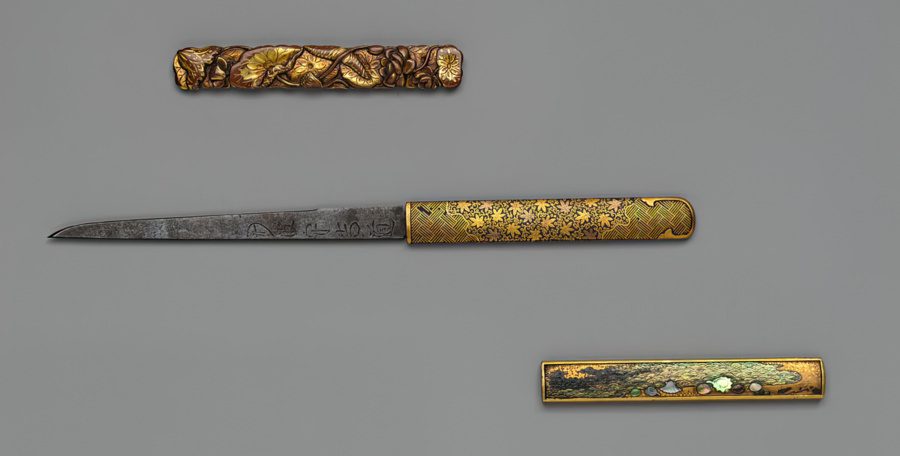
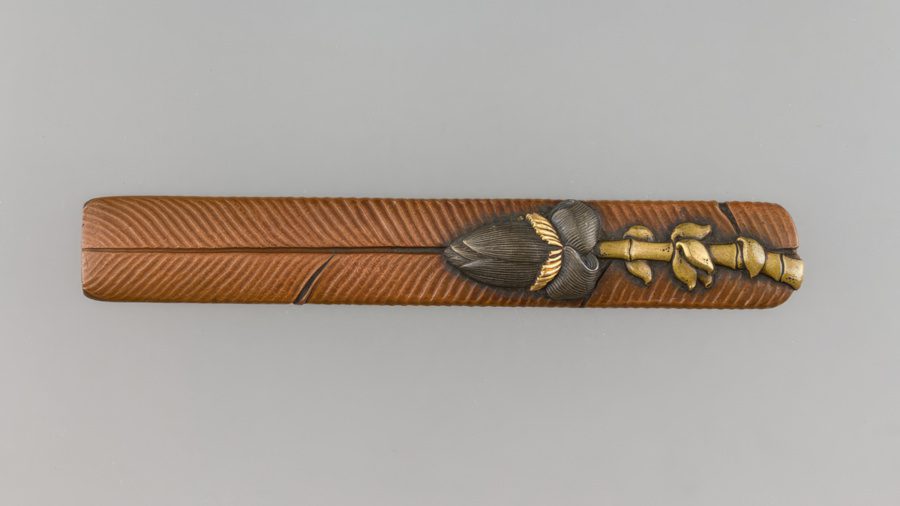
Apart from various Japanese alloys, artisans used various techniques to work the surface of a kozuka. These include several types of carvings (hon or bori), inlays (zogan), and different techniques of using colored metals (iro-e).
In taka-bori, the motif has a high relief design. In ishime-ji, the surface is carved with a fine chisel to achieve a surface pattern similar to scattered stones. In kebori (hair carving), fine lines are engraved with a V-shaped chisel.
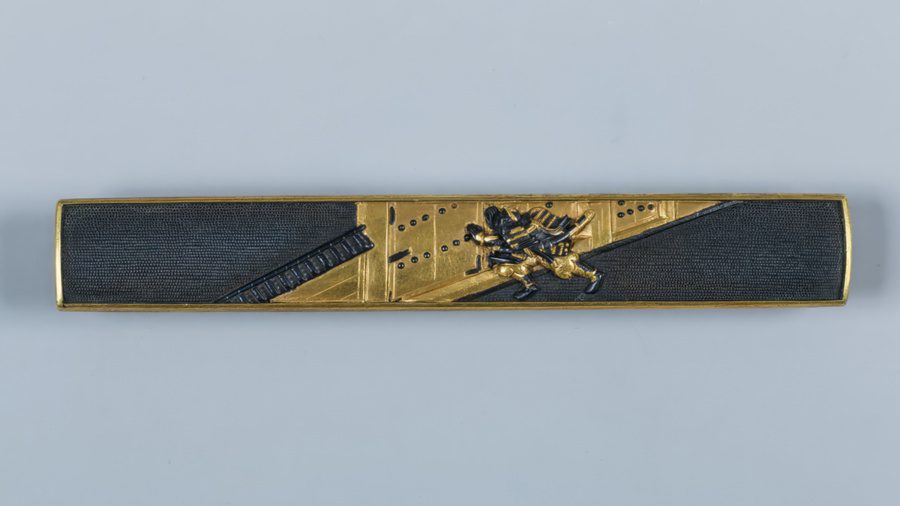

In nanako-ji, meaning fish-roe, the surface features a pattern of small dots stamped on the metal. Golden design elements on a shakudo nanako background were popular and are worn by the samurai on the most formal of occasions.
A kozuka could also feature a heraldic insignia. Various forms of decoration also reflected the style and preferences of the individual samurai. Some kogai (hair dressing tool) have been repurposed into kozuka and are referred to as kogai-naoshi.
